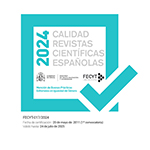Textualización, mistificación y el poder de la estructura
Abstract
En este artículo sostengo que muchas de las contribuciones del movimiento Writing Culture y muchas de sus críticas quedaron atrapadas en una “ilusión textual”. Por “ilusión textual”, hago referencia al encuadramiento de un texto de tal modo que se anulan conceptualmente sus contextos de producción y sus efectos y llega ser un artefacto independiente, que en última instancia -igual que en la noción de Geertz de cultura entendida como un ensamblaje de textos- se convierte en un modelo para lo que representa. Así formulado, el texto permite una serie de maniobras -críticas- auto-reflexivas, incluyendo algunas aparentemente transgresoras que, igual de reveladoras como puedan serlo, enmascaran de modo inevitable ciertas presunciones que constituyen la textualidad del texto y su rango de respuestas. Entre estas presunciones enmascaradas, están las actitudes hacia el lenguaje y su uso, en este caso, el énfasis en la función semánticoreferencial y el consecuente privilegio otorgado a la representación mimética a expensas de otras funciones lingüísticas, incluidas las pragmáticas, poéticas y fáticas. Unida a una tendencia histórico/cultural específica conducente a des-historizar el texto, la representación mimética llega a ser el principal foco textual y, en consecuencia, la cultura, modelada en textos, es articulada como una moda atemporal y representacional. Sostengo que el énfasis en los textos, que caracterizó al movimiento Writing Culture, limitó las reflexiones tanto de las circunstancias de la producción textual como de las maneras en que los textos constituyeron sus propias lecturas e interpretaciones. En resumen, sugiero que la etnografía y las ciencias sociales en general deberían prestar una atención más critica a las prácticas particulares de lectura/interpretación que cultivan y privilegian.Downloads
##submission.format##
Lizenz
La Revista de Antropología Social, para fomentar el intercambio global del conocimiento, facilita el acceso sin restricciones a sus contenidos desde el momento de su publicación en la presente edición electrónica, y por eso es una revista de acceso abierto. Los originales publicados en esta revista son propiedad de la Universidad Complutense de Madrid y es obligatorio citar su procedencia en cualquier reproducción total o parcial. Todos los contenidos se distribuyen bajo una licencia de uso y distribución Creative Commons Reconocimiento 4.0 (CC BY 4.0). Esta circunstancia ha de hacerse constar expresamente de esta forma cuando sea necesario. Puede consultar la versión informativa y el texto legal de la licencia.












